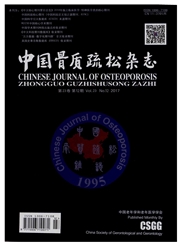

 中文摘要:
中文摘要:
风湿性关节炎(RA ) 和骨关节炎(OA ) 是二很普通的联合疾病,并且他们有 synovial 发炎和软骨破坏的描述,在 synovial 空间和包围软纸巾与众多的分解代谢的调停人和煽动性的房间的累积联系了。这些因素怎么被清除并且如果过程贡献的“清理”关节炎的致病不被知道。最近,我们在鼠标关节发现了仙子关节的淋巴的系统的存在。当淋巴的功能的刺激在 RA 和 OA 的老鼠模型稀释联合织物损害的严厉时, lymphangiogenesis 和淋巴的排干功能的封锁加速。更重要地,我们在关节炎的关节和“双性人”注意了淋巴的排水的机能障碍的类似中国药(厘米) 的理论,并且证明几双性人对待疾病的草药的药直接影响淋巴的 endothelial 房间的功能。这里,我们在仙子关节的淋巴的系统关于在联合发炎和变化之间的相互作用考察进展并且讨论我们连接“双性人”的看法到在关节炎的淋巴的机能障碍的厘米的理论。
 英文摘要:
英文摘要:
Rheumatoid arthritis (RA) and osteoarthritis (OA) are the two most common joint diseases, and they have characterization of synovial inflammation and cartilage destruction, associated with the accumulation of numerous catabolic mediators and inflammatory cells in the synovial space and surrounding soft tissues. How these factors are cleared and if the "clearance" process contributes to pathogenesis of arthritis are not known. Recently, we found the existence of the peri-articular lymphatic system in mouse joints. The blockade of lymphangiogenesis and lymphatic draining function accelerates while stimulation of lymphatic function attenuates the severity of joint tissue lesions in mouse models of RA and OA. More importantly, we noticed the similarity between the dysfunction of lymphatic drainage in arthritic joints and "Bi" theory of Chinese medicine (CM), and demonstrated that several Bi disease-treated herbal drugs directly affect the function of lymphatic endothelial cells. Here we review the advances about the interactions between joint inflammation and changes in the peri-articular lymphatic system and discuss our view of linking "Bi" theory of CM to lymphatic dysfunction in arthritis.
 同期刊论文项目
同期刊论文项目
 同项目期刊论文
同项目期刊论文
 期刊信息
期刊信息
